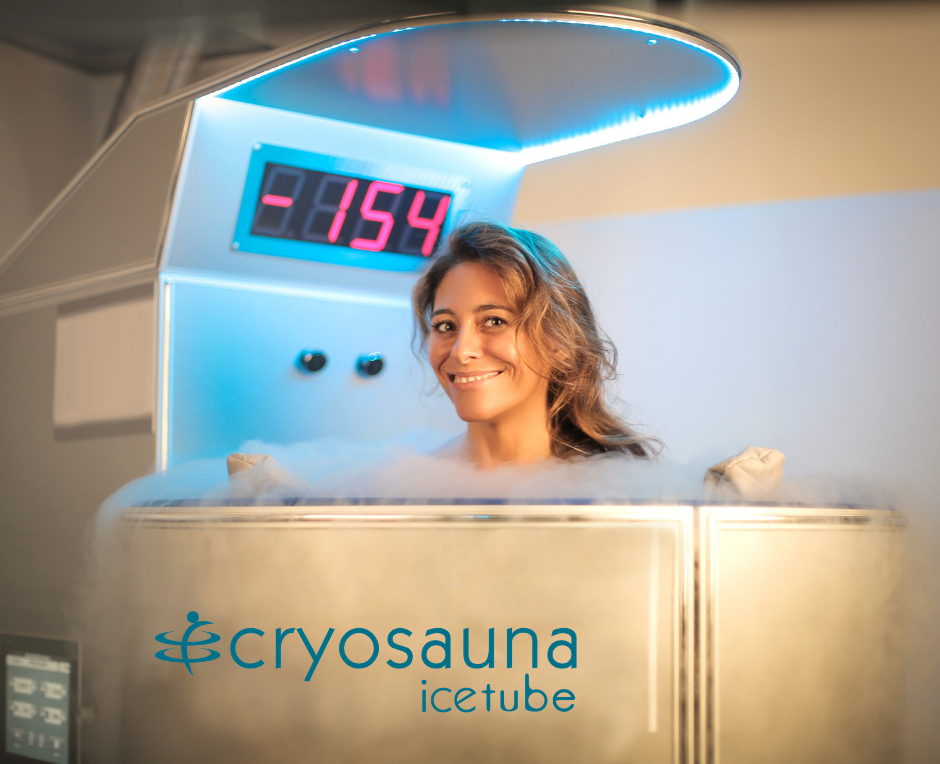The coldest temperature ever recorded on Earth is -89.2°C, while the typical whole-body cryotherapy temperature you see on the screen ranges from -65°C to -180°C. That sounds like enough to turn any living creature into a frozen stone.

However, people pay good money to expose their almost naked bodies to bone-chilling cold for better health, athletic performance, or aesthetic purposes. Spas, wellness centers, and rehabs worldwide integrate cryotherapy into their treatment plans as it gets increasingly popular.
Let’s go deeper into the cryotherapy temperature aspect to understand why the freezing range is critical for effective outcomes.
Has cryotherapy always used super-freezing temperatures?
Obviously not. Our ancestors in ancient Egypt applied ice, whose temperature barely falls below 0°C, to numb pain, reduce swelling, and decrease inflammation after injuries.
Through the centuries, the types of refrigerants for cryotherapy and the methods of their application have been changing. Whole-body cryotherapy of the kind we use nowadays emerged only after World War II, when liquid nitrogen (-195.79°C) became widely available. In 1978, Dr. Yamaguchi used it for treating rheumatoid arthritis patients in Japan.
Soon, nitrogen-fed cryotherapy saunas were created, and freezing cold treatment became part of physical therapy for rheumatoid arthritis. With further research, cold air therapy expanded to sports medicine, where it has been used for decades. Presently, healthcare and wellness, as well as the beauty industry, have embraced cold air therapy for its benefits.
Why should the temperature of cryotherapy be ultra low?
In simple terms, freezing therapy kicks your body’s natural protective mechanisms into gear – they are the same systems that help us survive extreme conditions. To trigger this full-body reaction, your skin needs to experience a rapid temperature drop of 10 to 20°C.

For better results, it is crucial to keep the temperatures inside the cryogenic chamber ultra-low and make sure the skin is exposed as much as safely possible. That is why clients usually enter the cryogenic machine wearing only underwear along with protective shoes to keep their feet safe from the cold. In walk-in chambers, you’ll also need a mask, gloves and headwear, to stay comfortable and protected.
During a 3-minute session, the body goes into survival mode: blood rushes to the core, and shivering kicks in to preserve heat.
Here’s the interesting part: most of the magic happens not during treatment but after the session ends.
- The enriched blood rushes back to the extremities, delivering nutrients to your cells and flushing out toxins.
- Your metabolism gets a boost helping burn more calories.
- Feel-good endorphins flood your system, giving you a natural high and a burst of energy.
These are the direct effects of cryotherapy, but the benefits don’t stop there. While ultra-low temperatures were originally applied to target pain and inflammation, many clients also notice better sleep, reduced stress, higher energy levels, and sharper focus.
Do all cryotherapy machines deliver the same freezing temperatures?
Not at all. Open-top cryogenic therapy machines running on liquid nitrogen are objectively the coldest. The cryogenic temperature range they operate in spans from -100 to -180 degrees Celsius.
But here’s the plot twist: we’re not talking about the actual temperature your body experiences. In these systems, the temperature sensor is typically placed behind a shield, so that the icy air doesn’t blast directly on the client, to keep the experience more comfortable. Still, the actual temperatures in nitrogen-powered open-top machines are lower than in walk-in chambers, but they feel more tolerable because the client’s head stays outside the chamber and the upper body is not overcooled.
Walk-in electric and nitrogen-powered cryochambers typically advertise a maximum cooling down to -110 degrees Celsius. Again, that’s rarely the real air temperature in the chamber, as the sensors are often placed in the coldest spot near the coolers or the display shows the temperature of the cooling mixture.
In a walk-in chamber, where your head and respiratory system are exposed to cold, the comfortable temperature range is much higher than in open-top systems. Windchill pushes this range even higher. To give you an example, with a true -110°C with no windchill, you’d need a special coat, and after just 20 seconds it becomes hard to breathe even in a mask. Or imagine a polar explorer gallivanting in their underwear in Antarctica or the Arctic – that’s the kind of extreme we’re talking about. So, in the majority of cases, the actual air temperatures in walk-in chambers are significantly warmer than what you see on the display.
Here’s a quick rule of thumb: LED lights or any electronics, like intercoms or screens, won’t operate at temperatures under -40°C. So if you see them running inside a chamber, the temperature is definitely higher than that.
But here’s what really matters: can the cold environment drop your skin temperature by 10 to 20°C? In this respect, both open-top cryosaunas and walk-in cryochambers can deliver effective results.
If you’re considering adding cryotherapy to your business, or even just trying it for yourself, the best approach is to test various options and see which feels right for you.
Which is better – an electric cryogenic chamber or a liquid nitrogen-fed cryosauna?
This question has been a subject of fierce discussion between manufacturers and users of electric and nitrogen-powered cryogenic machines. The truth is, both systems have their strengths and weaknesses.
With electric cryochambers, you should be ready for a high price tag (twice or thrice as much as a cryosauna price), high electricity bills, mandatory yearly maintenance costs, as well as more installation space for the machine in case of water cooling, and longer pre-cooling time.

Liquid nitrogen cryosaunas, on the other hand, are more affordable, energy-efficient and compact. They only take 3 to 5 minutes to get ready for use. However, with a cryosauna, you need to have a steady supply of liquid nitrogen and follow safety precautions during operation.
Advocates of electric cryochambers often highlight that these systems expose the entire body, including the head, for more uniform cooling. Cryosauna enthusiasts argue that nitrogen systems can reach lower cryo temperatures while remaining more comfortable, since the client’s head remains outside the chamber – a clear benefit for people sensitive to enclosed spaces.
Ultimately, the right choice comes down to your business model and client needs. If you primarily serve athletes or performance-focused clients, a nitrogen-powered cryosauna may deliver superior results for recovery with the focus on the lower body. For general wellness, beauty, or mixed audiences, both electric and nitrogen systems can perform equally well.
Read more on the difference between electric and liquid nitrogen cryosaunas here.


